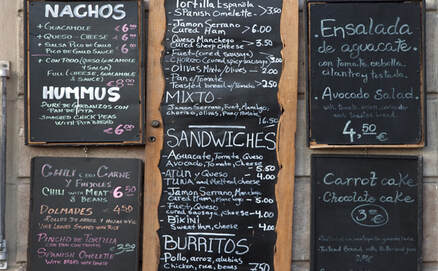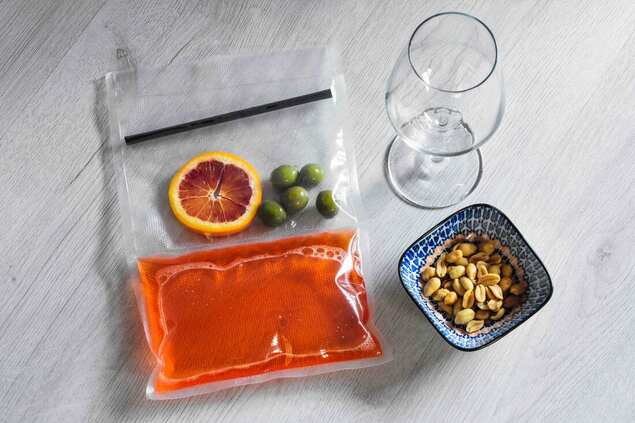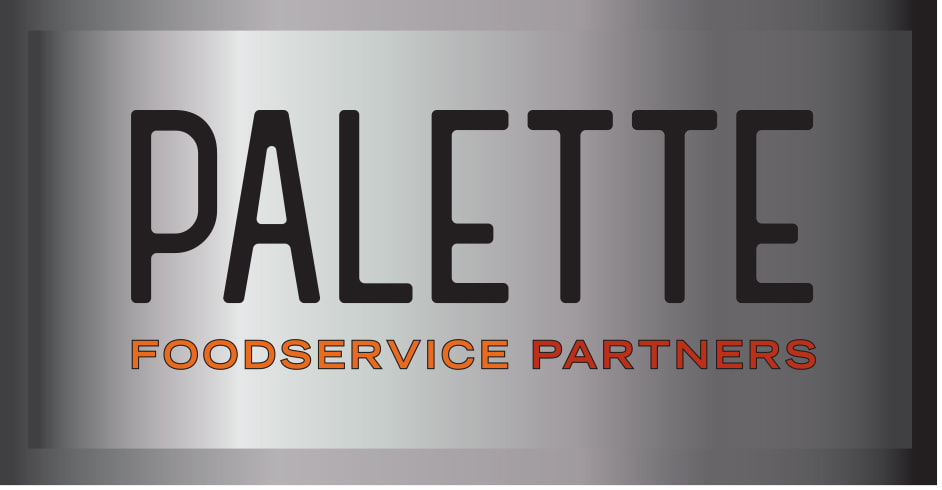 If you’re concerned that a slimmed-down menu may not provide enough options to hungry guests, fear not: Nowadays, a packed menu can send unappealing messages that you want to avoid communicating. Perhaps it says you’re trying to accomplish too much with a small staff and kitchen – or that the complexity of your dishes requires you over-rely on frozen ingredients or items made out of house. Maybe your large menu makes guests doubt you’d be able to ensure the freshness of all ingredients. More isn’t necessarily better. Having a menu that is in line with the scale of your kitchen and your staff makes it easier for you to attest to the freshness and quality of each item on your menu.  Restaurants have become increasingly adept at doing more with less in the past few years, but if you’re still trying to work at full capacity with a skeleton crew, you’re likely increasing your risk of foodborne illness. Condensing your menu, as well as decreasing your hours and available tables, can help you make sure you’re not letting critical food safety tasks slip through the cracks. Beyond that, if your operation looks a lot different than it did a few years ago, consider working with a food safety expert who can evaluate your current processes and suggest approaches that can help you save time and increase efficiency without compromising food safety.  As you prepare for an uptick in traffic over the holiday season, you’re likely stretching your imagination with new menu items and promotions that will make the occasion feel special. At a time when labor will continue to be uncertain, ensure that your food safety standards aren’t stretched to accommodate your plans. Consider slimming down various parts of your operation – to include your menu and aspects of your service model – to either eliminate or bring greater efficiency to your most labor-intensive tasks. Scrutinize each menu item to make sure you’re maximizing profit, minimizing the labor hours required to prepare and serve it, and opting for the plan that you’re best able to execute with minimal staff. It may require you to forgo offerings that have been popular in the past, but preserving food safety even if you have a skeleton crew can help you ensure the experience you’re providing is one of quality.  Beyond the dangers food allergies can cause to health and safety, allergic reactions can deliver unwanted publicity to restaurants – and that has been happening with greater frequency as food allergies have become more prevalent. According to the Food Allergy & Anaphylaxis Connection Team, the number of people with a food allergy in America has doubled in each of the last decades. Having systems to get accurate, up-to-date allergy information to your guests when they need it is more important than ever – and it can earn you a loyal following of guests who trust your brand with their health. Consider leveraging tabletop technology to provide detailed information about your menu. The full nutritional information of a dish can be accessible via a tablet and updated electronically and automatically across your locations. Receiving this information directly from the restaurant can also minimize the stress a guest may feel when a server has to check with the chef about allergy information and then relay the message back.  Reusable menus are so 2019 – and they are also among the grimiest items in your restaurant. If you want a more eco-friendly alternative to paper menus, consider blackboard menus, digital menus or menus available via QR code. The transition away from the large, reusable, multi-page menu doesn’t have just safety benefits, either – it can also help you make more frequent changes to your food selection, encourage you to whittle down your menu and allow you to focus on delivering a smaller variety of items especially well. The loosening of regulations around the sale of to-go alcohol may be among the pandemic-era changes that will last long after COVID-19 is behind us. The trend started well before the pandemic: According to results of the National Restaurant Association’s 2019 Restaurant Delivery Survey, 59 percent of adults said they would order alcoholic drinks with their food delivery order from a restaurant if it were allowed. Now, these higher-margin sales could be an important lifeline for restaurants in addition to a way to meet consumer demand. Just make sure you’re staying up to date on changes to your state’s laws and the liability and reputational risk your business faces from these sales. The National Restaurant Association’s ServSafe team developed a State Alcohol Delivery Laws/Orders/Regulations tracker to help restaurants keep track of state-by-state changes that operators need to be aware of. https://bit.ly/2MoW0en
Holiday gatherings and buffets go hand-in-hand – well, they did until 2020. If you have served food buffet-style in the past, you have no doubt reinvented it for the current environment or replaced it altogether. If you’re still offering this service in some form, consider these precautions to help protect safety: Have your staff (wearing PPE) serve each guest and provide new dishes and cutlery. Enforce social distancing and mask-wearing for guests waiting in line. Serve items in self-contained, miniature form. Provide the option of a scaled-down buffet sampler for each table to avoid having guests circulate – or even offer a “buffet in a box” take-away option. Have staff (again wearing PPE) circulate with trays carrying pre-portioned items, cocktail-party style, that they can serve to each table. Buffets are like a kid-in-a-candy-store kind of experience. How can you replicate that feeling while protecting everyone’s safety?
If, before the pandemic, your restaurant generated most of its business through dining room sales as opposed to through off-premise sales, your staff may be used to communicating far differently about your menu. If your team was near-perfect when it came to suggesting substitutes and communicating about allergens during conversations at a guest’s table, have you found a new system for replicating those communications as effectively either electronically or during the shorter in-person interactions that are common now? As the National Restaurant Association reports, the increase in off-premise sales and the decline in on-premise sales mean your servers don’t have as direct of an opportunity to discuss food allergies and sensitivities. So it’s important (and, in some locations, required) to update your allergen profiles as your recipes change – and to make sure that information is readily accessible in written form – on your website, app, or at your restaurant for those who order food in person. That’s especially true to remember as you update your menu for a new season or substitute new ingredients due to shortages.
Even during pre-pandemic times, menus were among the dirtiest items in a restaurant. How you present your menu now can not only make a difference to the safety of your business, but also send a message to your community about how you are protecting their health right now. If you can, opt for chalkboard or digital menus that can be adjusted as needed and don’t need to be discarded after each use (like paper menus). If you use laminated menus that can be cleaned, follow the proper precautions: Food Safety News advises cleaning and disinfecting them after each use with a soft cloth, separating used menus from clean, avoiding harsh chemicals or submerging menus in water, and letting menus dry completely before reuse. One alternative to this in your dining room is posting each side of your menu under glass on each table for easy viewing and cleanup.
If takeout meals, meal kits or refrigerated meals to be prepared at home represent a larger percentage of your business right now – or you suspect they will in the future – make sure your packaging and heating instructions have kept up with the changes. Prepare clear cooking and reheating instructions and label your packaging accordingly (and don’t forget to list common allergens). If food can be refrigerated or frozen, include consume-by dates too.
|
subscribe to our newsletterArchives
April 2024
Categories
All
|








 RSS Feed
RSS Feed